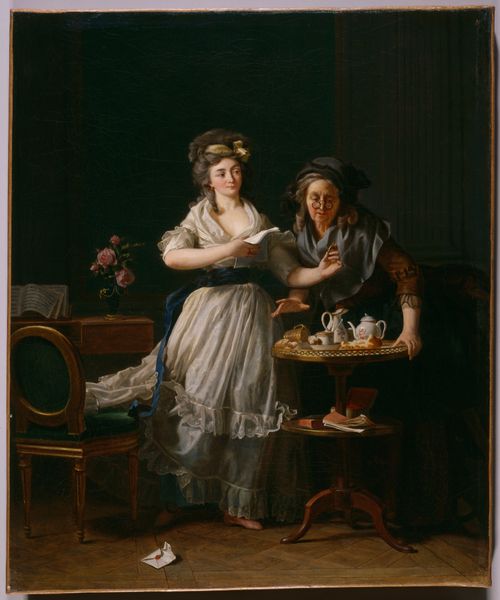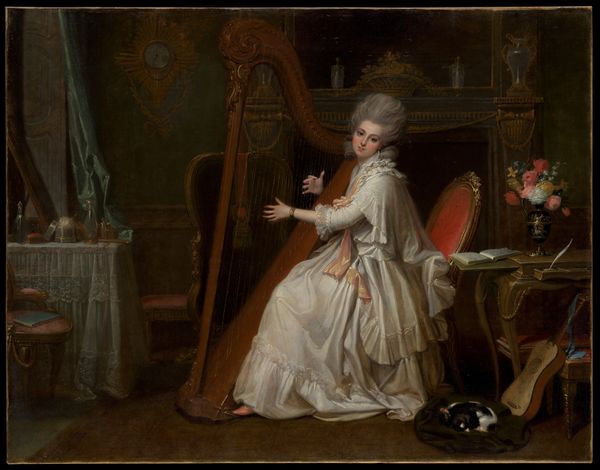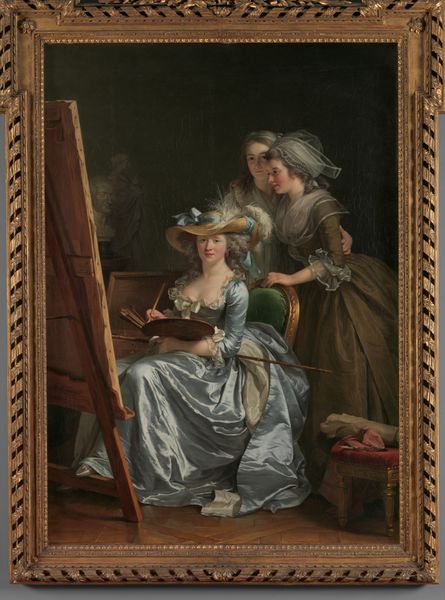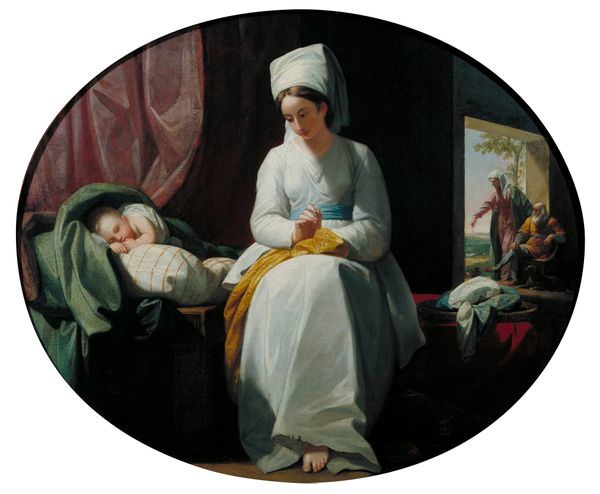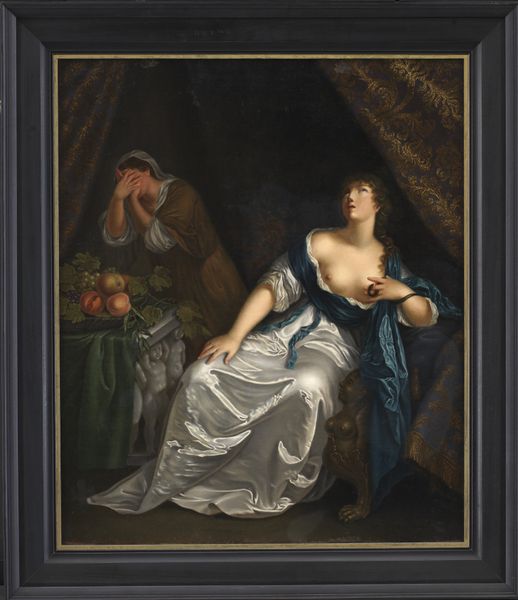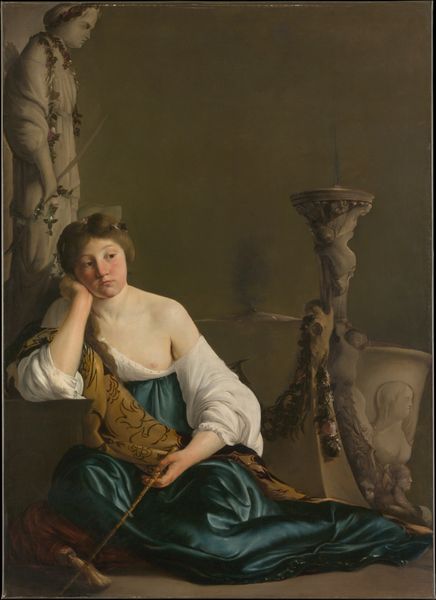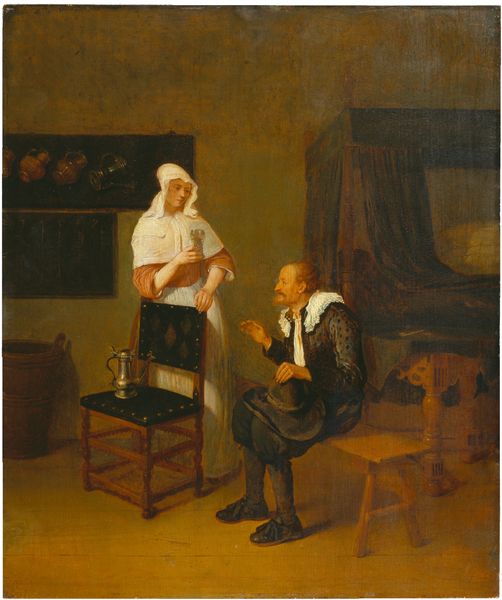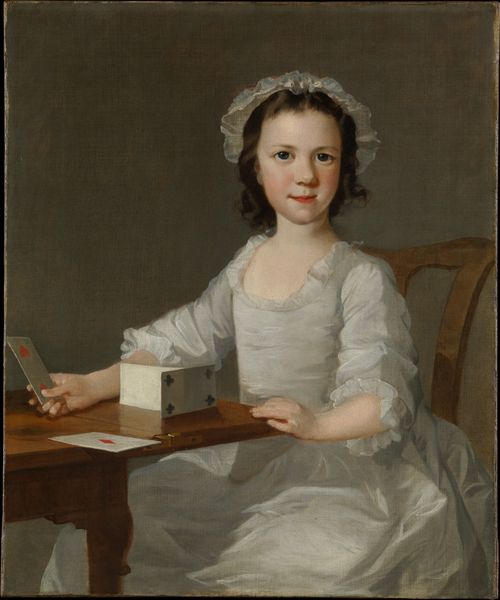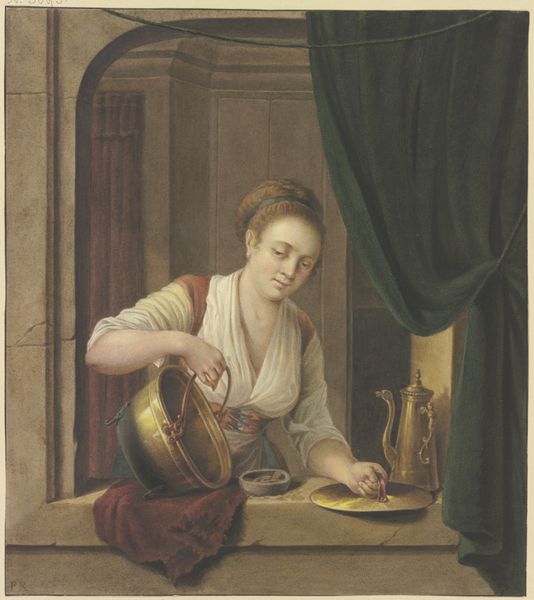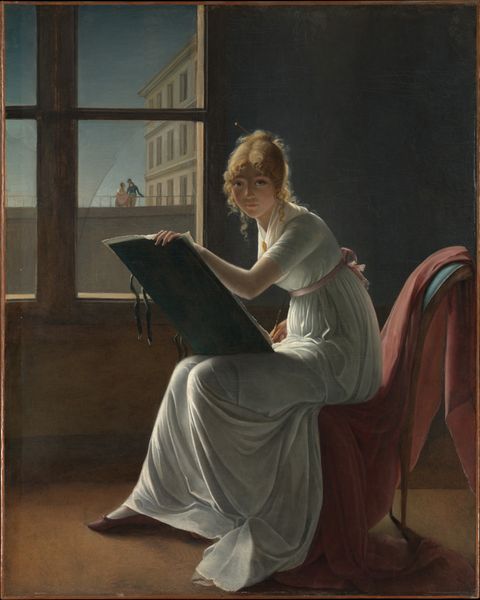
The Interior of an Atelier of a Woman Painter 1789
0:00
0:00
painting, oil-paint
#
portrait
#
neoclacissism
#
painting
#
oil-paint
#
genre-painting
#
history-painting
#
portrait art
Dimensions: 45 7/8 x 35 in. (116.5 x 88.9 cm)
Copyright: Public Domain
Editor: This is Marie Victoire Lemoine’s “The Interior of an Atelier of a Woman Painter” from 1789, currently housed in the Metropolitan Museum of Art. It's an oil painting depicting two women within a studio. I’m struck by the tranquility of the scene. What stands out to you when you look at this piece? Curator: What I immediately notice is how Lemoine strategically positions women within the artistic sphere. Consider the time period – the late 18th century. The Academy, the ultimate gatekeeper of artistic success, remained largely male-dominated. How does Lemoine subvert that power dynamic in her depiction? Editor: So you see it as a political statement? Curator: Precisely. By representing women actively engaged in the artistic process, Lemoine challenges the established norms of her time. Think about the salons, influential gatherings where art was discussed and judged. Were women adequately represented in those spaces? Was their work taken as seriously as that of their male counterparts? Editor: It’s interesting you mention that because, I wonder who the woman is that is being drawn, and who she represents. Curator: An excellent question! Consider the artistic conventions of portraiture at the time. Often, portraits were commissioned by wealthy patrons to assert their status and influence. Could Lemoine be suggesting that women, too, are worthy subjects of artistic representation, capable of wielding their own forms of power and agency? Editor: I never considered the subtle protest of this painting before. It's more than just a genre scene; it's a declaration. Curator: Indeed. It forces us to examine the social and institutional structures that shape artistic production and reception. Art serves as a cultural marker of any period, and Lemoine places herself and other women right in the narrative of that era. Editor: This makes me think of what art spaces are like today, and who has access to them. Thanks for offering that insightful context. Curator: My pleasure. The past always has something to teach us about the present.
Comments
No comments
Be the first to comment and join the conversation on the ultimate creative platform.
